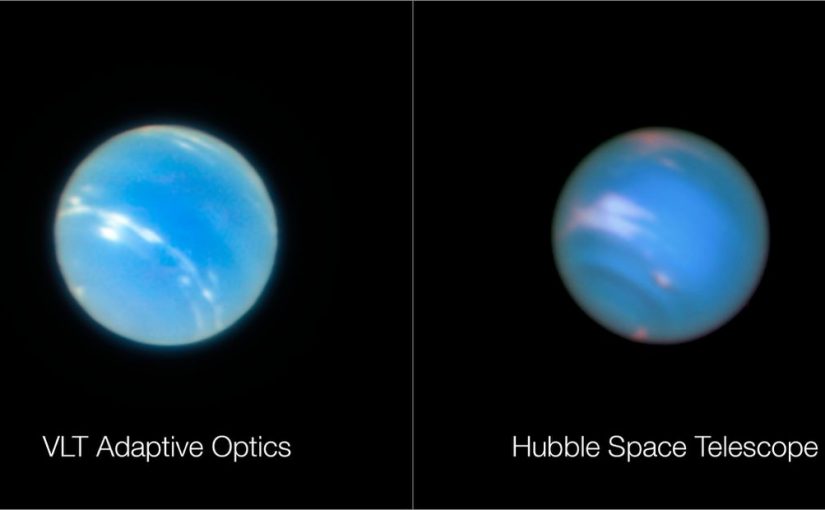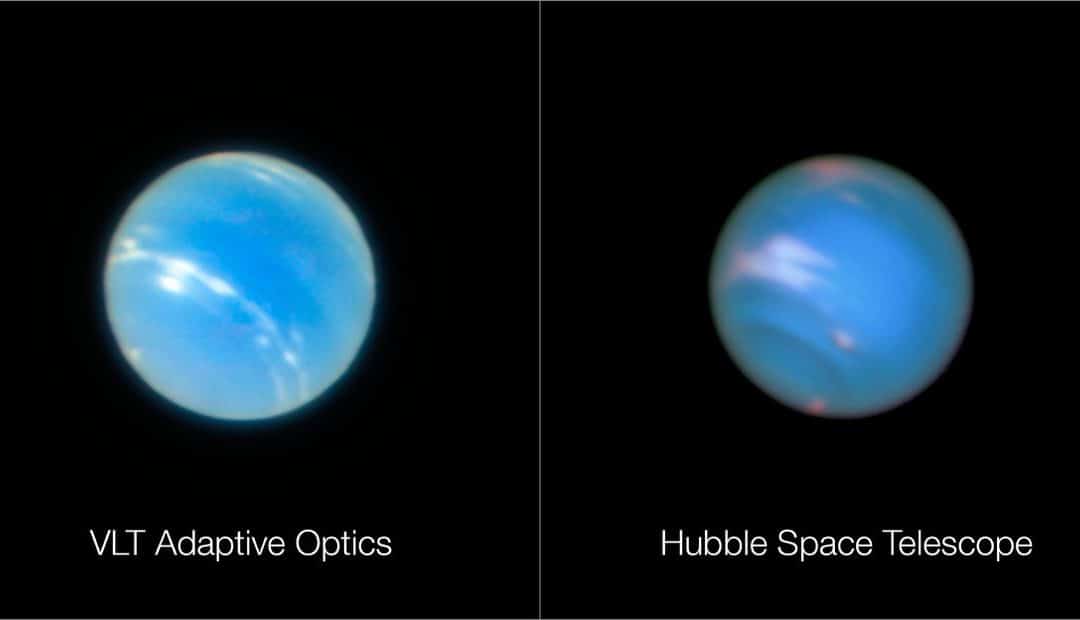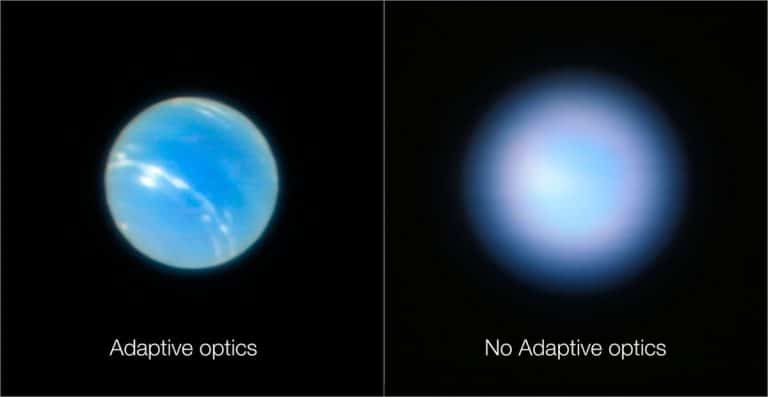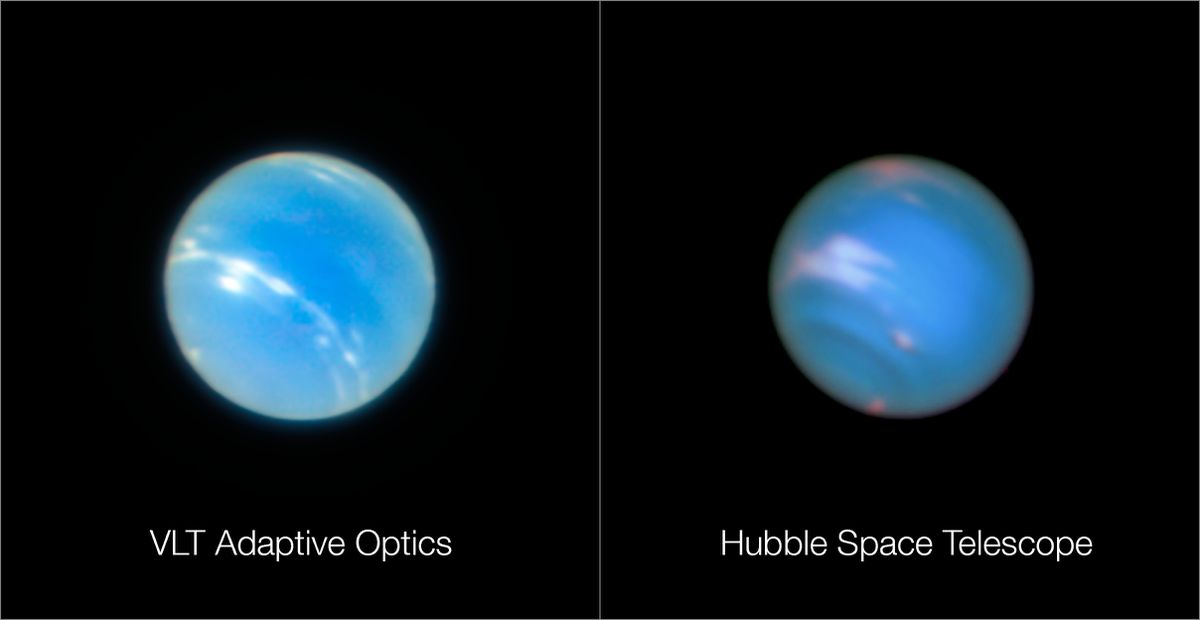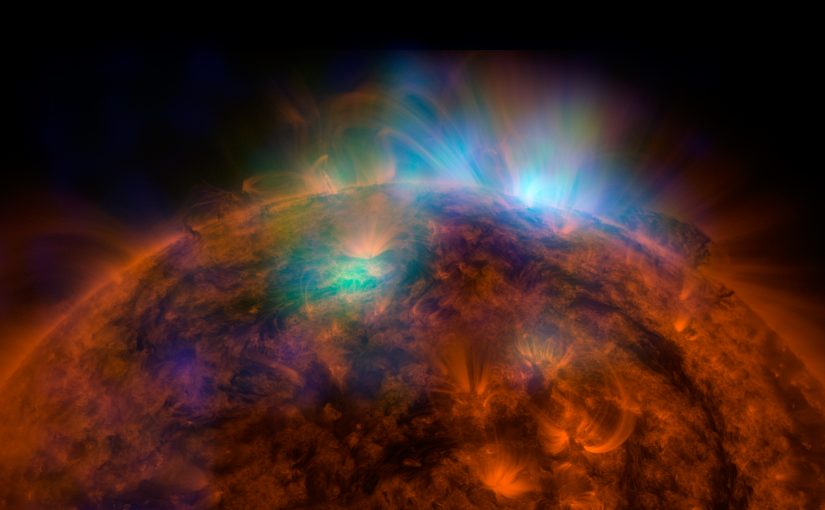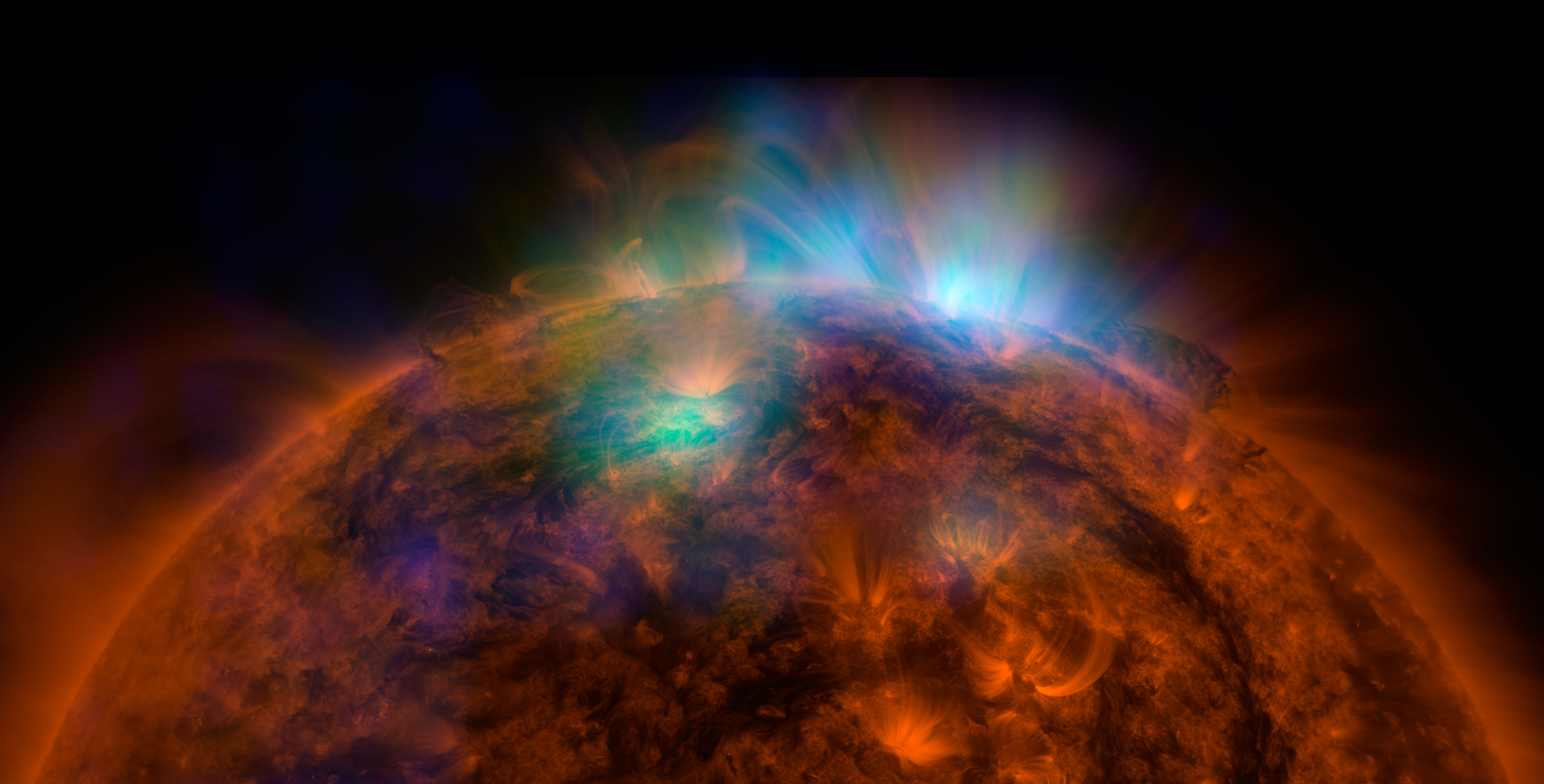A pesar de estar a unos 4.504.300.000 km de la tierra, podemos ver al octavo planeta de nuestro sistema solar contando desde nuestra estrella, Neptuno se ve particularmente nítido en este nuevo set de imágenes capturadas por uno de los telescopios más poderosos del mundo. Ubicado en Chile, el “European Southern Observatory” o “ESO” cuenta con el Very Large Telescope (VLT) que lo han utilizado por su tomógrafo laser para capturar imágenes de prueba de este planeta y el conjunto de estrellas a su alrededor, todo esto en conjunto con su “Multi Unit Spectroscopic Explorer” (MUSE) que a su vez trabaja con otro módulo llamado GALACSI Adaptive optics, que ayuda al telescopio a corregir la turbulencia a diferentes altitudes en la atmósfera, resultando así imágenes mucho más claras que antes capturadas desde la tierra.
A continuación una comparación sobre como luce el planeta con y sin el estabilizador activado.
Y esta es otra comparativa entre el famoso telescopio espacial Hubble y el terrestre de la ESO

